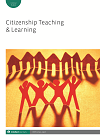
Full text loading...

The aim of this article was to examine how gender and gender context affect students’ experiences of democracy in upper secondary school. The study was based on survey responses from about 1500 students. The students’ experiences of school democracy were operationalized as a collective deliberative communication among fellow students and teachers. Three different explanatory factors were considered: the significance of gender, gender context and the gendered content of the educational programmes. The results showed that a higher share of male students in a class is associated with poorer experiences of democracy. However, educational programmes with a traditional male content were proven favourable regarding school democracy. Since the gender context has one effect and the contents of the education programme affects in the opposite direction, the analytical separation of the variables was necessary to reveal the hidden equality problem of school democracy. Gender context does matter.

Article metrics loading...

Full text loading...
References


Data & Media loading...

Publication Date:
https://doi.org/10.1386/ctl_00132_1 Published content will be available immediately after check-out or when it is released in case of a pre-order. Please make sure to be logged in to see all available purchase options.